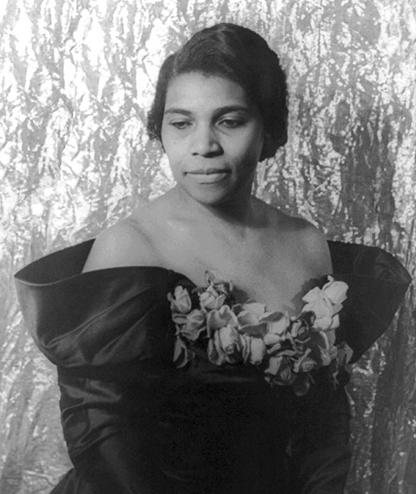April 16, 2015
Across the states, we see an emphasis on learning to write and read at a depth that prepares students for success in college, career, and life. These efforts require students to work with evidence—find it, distinguish the letter shapes in it, absorb it, comprehend it, evaluate the veracity of it, and finally share and cite it. In this post, we examine using text evidence in new ways as students and their teachers tackle biographies—a part of human culture for thousands of years.
As I mentioned in an earlier blog post on informational text, humans are uniquely driven to create a coded record of their existence and equally driven to decode the records of others. We find creative ways to craft these records. From photograph to pictograph, timeline to testimony, we write and read about each other as we have done for about 5,000 years (Flanagan, 2009).
Intriguing, to be sure, but even more intriguing is that we humans really aren’t engineered to encode or decode symbolic representations of life. As Dehaene (2009) explains, there is nothing in our human development that could have prepared us to express or absorb language through vision. If we look at the physiology, the eye is a relatively poor scanner. Only the fovea, a tiny region in the central part of the retina, is dense in high-resolution cells sensitive enough to light to determine letter shapes. Nevertheless, at about the same time, cultures around the globe created symbols simple enough to be stored in our ventral visual system and linked to our language areas. Culture, rather than physiology, explains writing and reading—in particular, the drive to write and read about each other.
It is because of this drive that biography is a particularly powerful form when it comes to teaching students to understand and grapple with text evidence.
Art as a Bridge to Biography
The word biography, literally translated as “life portrait,” comes to our classrooms from the Greek bio, or “life,” + graphia, a “drawing or presentation.” We might wonder how students’ engagement in exploring the lives of others deepens if we were to set aside the traditional five-paragraph essay in favor of a life portrait, if we were to ask students to write biographies of others. Rather than ask them to create a list of notable events, what if we asked them to know the subject so well that they are able to paint a life with words?
“Painting a life with words” begins with students understanding the analogy. Take time to explore the explicit meaning of biograph—that it is a life portrait. You may want to display examples of actual portraits and ask students to note subtle differences in two or more portraits of the same subject. What distinguishes one portrait from another? Are the distinctions found in the elements of art, such as use of color and space?
While there are seven identified elements of art (Esaak, 2015), for our life portrait analogy, we’ll focus on three of those seven—form, texture, and line.
Exploring Form
At its most basic, form refers to a three-dimensional figure; however, in the context of art, the broader understanding of form includes the visible elements of the work and the way those elements are put together (Esaak, 2015). The elements of a biography include birth, early life, education, accomplishments, place in history, and passing. Informative without a doubt, but students could add dimension by focusing on the form—or on how they put those elements together as they write their biographies. For example, a life portrait may begin with famous last words such as Abraham Lincoln’s final utterance, “It doesn’t really matter.” The remainder of the portrait explores what it is that really doesn’t matter and why it doesn’t, as well as to whom he was speaking and in what context. Other famous last words (Higgins, 2014) that may provoke additional exploration include:
- “Friends applaud, the comedy is finished.” –Ludwig van Beethoven
- “I am about to—or I am going to—die: either expression is correct.” –Dominique Bouhour
- “How did the Mets do today?” –Morris “Moe” Berg
Exploring A Moment in Time
Alternatively, students may focus on a moment in time. This life portrait form explores the subject through the impact of a single event in his or her life. For example, teachers can introduce students to this form with Renaissance Accelerated Reader 360® articles, such as the Smithsonian article on Marian Anderson that explores the substantial and lasting impact of a moment in time in 1939 when Marian Anderson sang at the Lincoln Memorial. Why did she perform at the memorial rather than in a performance hall? How were others inspired by her voice?

Photograph by U.S. Information Agency
American contralto Marian Anderson performs in front of 75,000 spectators in Potomac Park, Washington, D.C. She is accompanied by Finnish pianist Kosti Vehanen.
Exploring Texture
Texture gives the work its depth—that quality that invites a lingering look (L. Fullerton, personal communication, March 22, 2015). In a life portrait, texture is the evidence. The stronger the evidence, the more a reader may linger over the writing. With Accelerated Reader 360, for example, teachers model and then engage in explicit instruction to help students understand primary and secondary sources, such as in the Accelerated Reader 360 article on Charlotte Brown, the star high school pole vaulter who happens to be blind. This article includes primary source evidence in the forms of her pole vault statistics and quotes from Brown, as well as her coach. Since Charlotte’s story is current, work with this article invites students to research her track career even further.
Exploring Line
Line, often considered the fundamental element in art, is a continuous mark made by a moving point. In a life portrait, the line is quite literally comprised of the lines of text crafted by the portraitist: the moving points, the key ideas and concepts. The reader—again, quite literally—reads between these lines to infer meaning from the text. The interaction among reader, text, and inference requires students to use evidence skillfully, state facts apart from opinion, and cite sources.
Bringing the Elements Together
Again, using simple-enough symbol systems, humans have been describing the lives of others for about 5,000 years. Perhaps it is time to take those descriptions in another direction. Using the art analogy described in this post, teachers lead students to explore the Greek roots of the word biography, “life + portrait.”
Here’s a snapshot of how the elements come together when teaching informational text with biography:
- As students begin writing their assigned life portraits, they focus on the form of their work. Will they focus on a single moment in time or famous last words? Are there other forms for students to explore?
- Teachers lead students with Accelerated Reader 360 articles to find other ideas for form. Once the form is determined, students gather rich evidence to add texture—or depth—to their writing. Their writing should be textured—evidenced—enough to prepare them to write in a college or career setting.
- Finally, students complete the life portrait with consideration of the lines they write, for with these lines, their readers infer meaning, understand the impact, and sustain engagement in the life portrait.
It’s time to ask students to paint a life with words—and to teach them to truly understand and manipulate text evidence through this powerful genre.
P.S. Discover more ideas for teaching informational text through life portraits in Jan’s follow-up post.
References
Dehaene, S. (2009). Reading in the brain: The science and evolution of a human invention. New York, NY: Penguin Group.
Flanagan, O. (2009). How our brains learned to read. Retrieved from http://www.newscientist.com/blogs/culturelab/2009/11/how-our-brains-learned-to-read.html
Esaak, S. (2015) What are the elements of art? Retrieved from http://arthistory.about.com/cs/reference/f/elements.htm
Higgins, C. (2014). 64 people and their famous last words. Retrieved from http://mentalfloss.com/article/58534/64-people-and-their-famous-last-words


